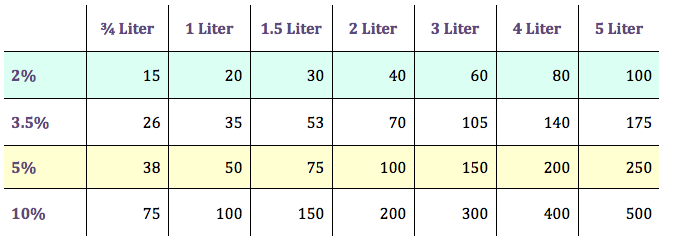Here is a handy brine table for your fermenting endeavors.

A Few Quick Notes
Water is in metric and salt is in grams.
The term “brine” is a ratio of salt dissolved into water and it is referred to as salinity. The only way to guarantee you are using the correct amount of salt is to use a gram-scale (see Stalk Your Salt). Seriously, you need to weigh your salt. Salt varies widely due to its grind, density and moisture content.
Almost all vegetables require a 2% brine when using an anaerobic fermenting system.
- 2% Salinity: Green beans, carrots, broccoli, cauliflower, pearl onions, asparagus, shallots, parsnip, kohlrabi, zucchini, radish, mushroom, beet kvass and garlic cloves
- 3.5% Salinity: Pickling cucumbers
- 10% Salinity: Brine-curing meat, feta-cheese, pepper-mashes, curing green olives, fish sauce. This is for experienced fermenters only! I do not advise these ferments for newbies.
Self-brining vegetable such as sauerkraut, kimchi, spiralized daikon, and thinly-sliced beets typically do not require a brine to be added. There are times where a little extra brine is needed, and in this case, I would recommend adding enough 2% brine to cover the top of the packed vegetables by one to two inches.
In addition, temperature, light/darkness and duration should be considered for optimal ferments. For further information, please see my book for details.
